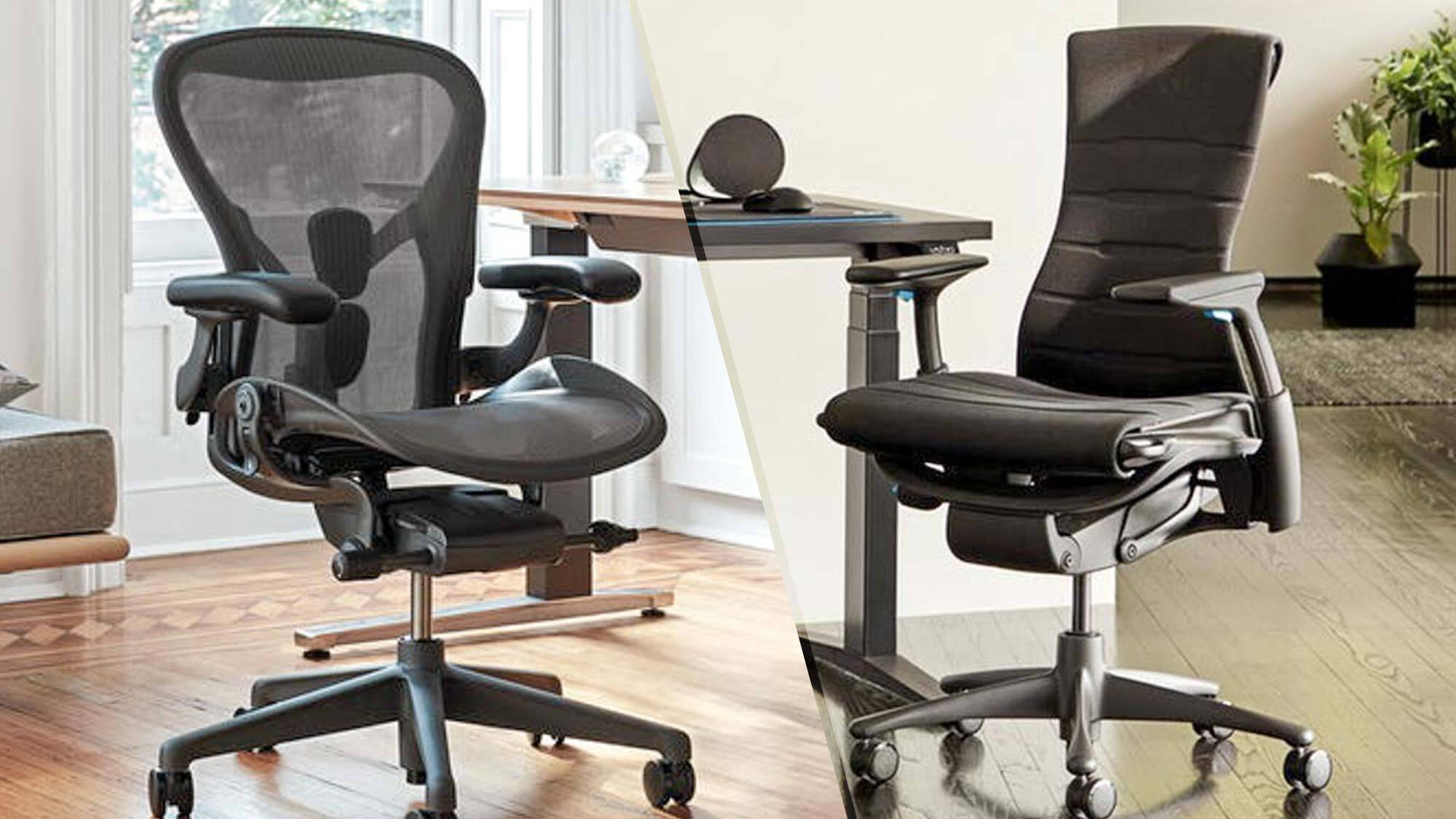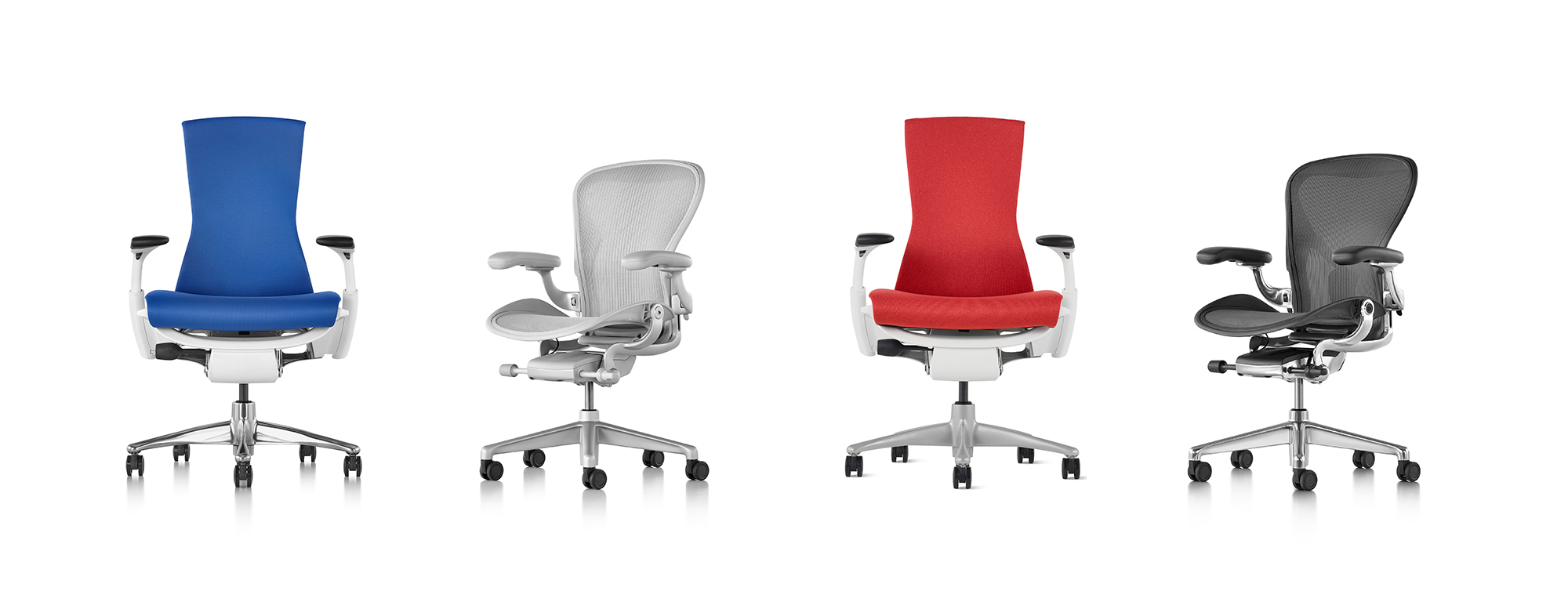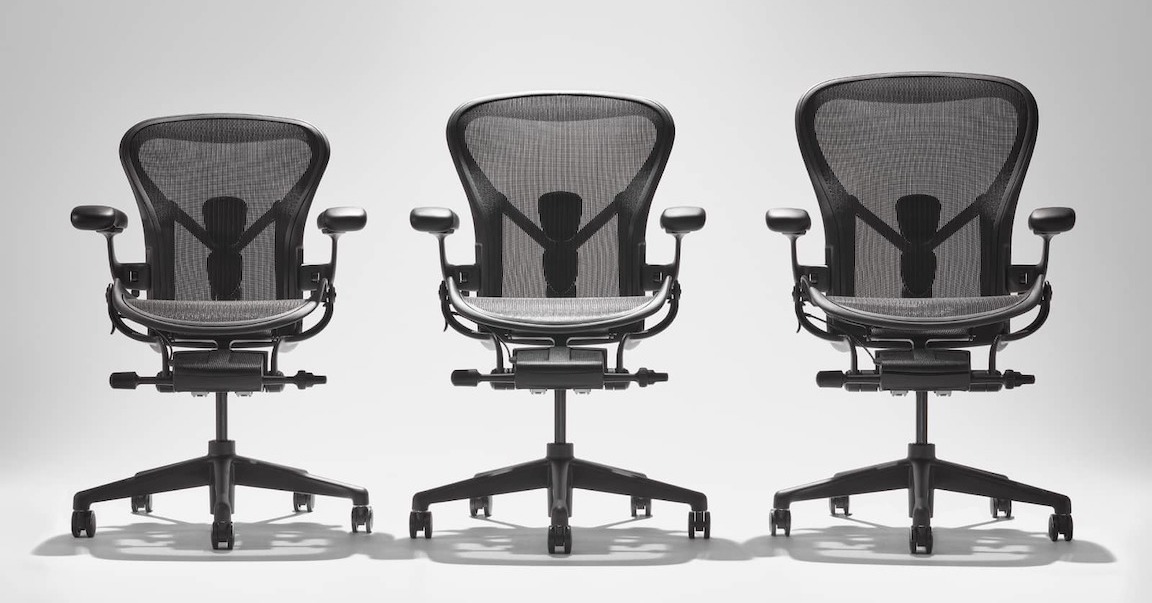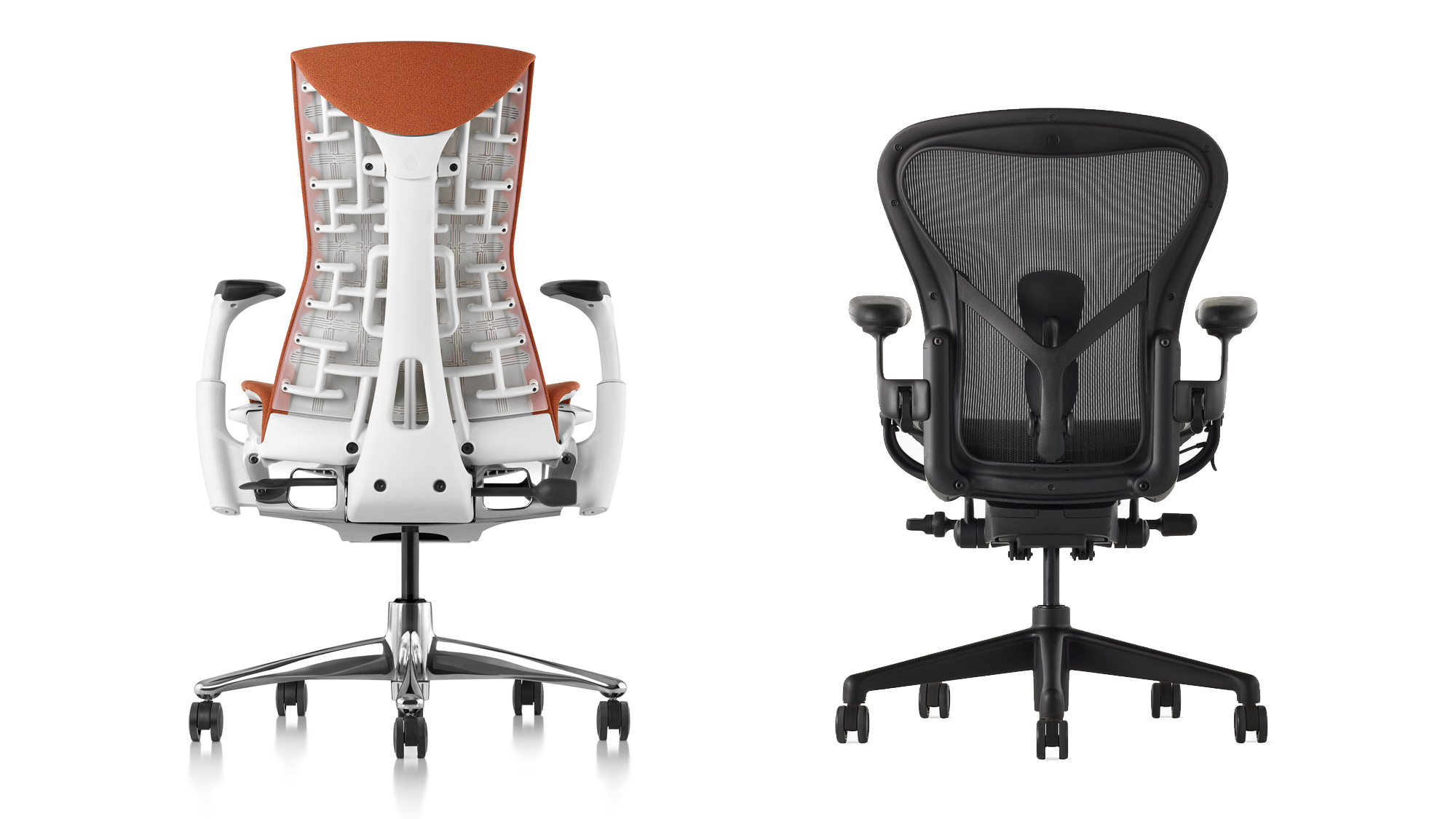Herman Miller Embody vs Aeron: Which office chair should you buy?
Which is the best Herman Miller office chair for you?

The Herman Miller Aeron chair is one of the most iconic office chairs around — and one of our top picks on our best office chairs page. However, that’s not the only seating that the company makes. The Herman Miller Embody is also among its more popular chairs, and it costs around the same as the Aeron.
So, if you’re having trouble deciding between the Herman Miller Embody vs. Aeron, this guide will walk you through the differences with each model to help you make a more informed choice.
- Have a seat in one of the best office chairs
- The best desks for getting work done
Herman Miller Embody vs Aeron: Price
Let’s start off by saying that neither of these chairs are cheap. The Aeron starts at $1,095, and can cost nearly twice that ($1,995) when fully outfitted. While the Embody starts at a pricier $1,495, it maxes out at $1,895, so if you’re going full luxe, you’ll pay about $100 less than a maxed-out Aeron.
There’s also a special Logitech gaming edition of each chair ($1,595 for the Embody, $1,495 for the Aeron), whose main difference between the regular models is the color scheme. The Embody has a neon blue back, while the Aeron is all black.
Herman Miller Embody vs Aeron: Color options

Maybe it’s because it was designed for an office setting, but the Aeron is only available in grays and blacks. The Embody doesn’t have a much larger palette from which to choose, but it is available with white accents, and you can choose from several upholstery colors, including red, green, and blue.
Herman Miller Embody vs Aeron: Design
One of the biggest differences between the Embody and the Aeron is the seat and back construction. The Aeron has a mesh back and mesh seat, while the Embody has more of an upholstered look.
The Embody’s backrest is also taller than that of the Aeron, extending all the way up to your shoulder blades. It’s also a bit more contoured than the Aeron, and has what it calls “pixelated support” — a series of contact points — along the back designed to hug your spine and provide support as you shift in your seat. The company says this design helps better distribute weight, even as you move around.
Get instant access to breaking news, the hottest reviews, great deals and helpful tips.
The Aeron Onyx is now being made with 2.5 pounds of plastic recovered from oceans, while the Embody is made of 42% recycled materials.
Herman Miller Embody vs Aeron: Customization

When purchasing the Embody, you can choose the color of the frame, the upholstery, and the type of casters you want.
The Aeron is much more customizable. For starters, the chair comes in three sizes, so it can better accommodate people of all shapes and sizes. You can also choose what sort of back support you want (basic, adjustable lumbar, adjustable PostureFit SL); the tilt mechanism; if you want fully adjustable, party adjustable, or fixed arms; and if you want standard or leather armpads. Oh, you can select the type of casters you’d like.

Herman Miller Embody vs Aeron: Adjustability
Provided you get the top-end model, the Aeron lets you adjust the arms, the seat height, the forward tilt, the tilt tension, and the lumbar support.
The Embody lets you adjust the arms, the seat height, the seat depth, the tilt tension, the tilt limiter, and the back.
Herman Miller Embody vs. Aeron: Bottom Line
You won’t go wrong when choosing between the Herman Miller Embody or the Aeron. Both are well-made, comfortable chairs. However, those with smaller or larger bodies may prefer the Areon, as it comes in multiple sizes.
For those who want a more contoured back — or something that better supports their posture — the Embody’s spine-hugging seat back is the better option. And, while it only comes in one size, it’s offered in more colors than the Aeron.

Michael A. Prospero is the U.S. Editor-in-Chief for Tom’s Guide. He oversees all evergreen content and oversees the Homes, Smart Home, and Fitness/Wearables categories for the site. In his spare time, he also tests out the latest drones, electric scooters, and smart home gadgets, such as video doorbells. Before his tenure at Tom's Guide, he was the Reviews Editor for Laptop Magazine, a reporter at Fast Company, the Times of Trenton, and, many eons back, an intern at George magazine. He received his undergraduate degree from Boston College, where he worked on the campus newspaper The Heights, and then attended the Columbia University school of Journalism. When he’s not testing out the latest running watch, electric scooter, or skiing or training for a marathon, he’s probably using the latest sous vide machine, smoker, or pizza oven, to the delight — or chagrin — of his family.
